

| Almost all other nations rangers (for example US Army
Rangers) are airborne, and are trained to operate in many
different climates, such as desert and jungle. They are
mainly used as a spearhead for other forces, conducting
such missions as airfield seizures or amphibious
landings. Swedish Arctic Rangers are very different from these other nations rangers. Arctic Rangers are only trained to operate in a sub-arctic forest/mountain environment, they are not airborne, and are not used as a spearhead for other forces. In fact, they are not used to fight the enemy’s main forces at all - they are used for guerilla warfare and intelligence gathering. |
| The main picture All modern mechanized armies require great amounts of supplies (food, fuel, ammunition) in order to stay combat efficient. The bulk of these supplies is transported with trucks. The northern parts of Sweden are covered with dense forest and swamps, so all trucks must travel on roads. Since northern Sweden is very sparsely populated there are also very few roads. This makes the enemy’s supply lines very vulnerable. If you destroy key parts of a road, there are no alternative supply routes to use - no supplies will reach the front. It is also very easy to repeatedly ambush enemy supply convoys, since there are no alternative roads for them to travel on. |
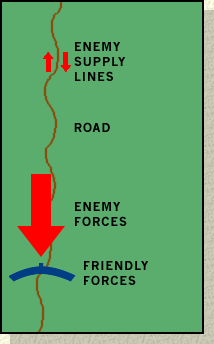 |
|
| Infiltrating
enemy territory In order to exploit this weakness of the enemy, Arctic Ranger units infiltrate enemy territory. Arctic rangers are organized into independent ranger battalions, which consist of several ranger companies. Each ranger company is made up of several independent ranger teams. A company has about 12 teams, and there are usually 9 men in each team. These companies go around the enemy’s main forces, infiltrating deep into enemy territory, at distances of 50 to 300 km behind the front lines. The method of insertion depends on the duration of the mission, time of year and distances involved. If the distances and duration are short, insertion is done on foot or skis. If they are long, insertion is done with ground vehicles or helicopters. Once a ranger company reaches it’s designated area, it spreads out so that each team has it’s own specific area to operate in. |
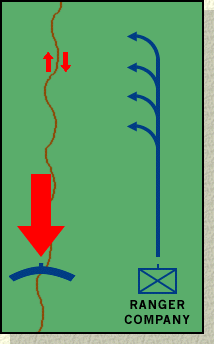 |
|
| Preparations Now that each team is in it’s own specific area, preparations are made before any combat begins. The first priority is setting up the team’s main base. Setting up a base consists of such things as raising the tent, camouflaging the tent and all vehicles, digging defensive positions, setting up defensive mines etc. In the winter this takes a lot of time (a day or more), because you have to dig away a lot of snow and cover up your tracks. While most of the team is building the base, the team commander (a sergeant) and another ranger go out and perform a first reconnaissance of the intended target - the road. The purpose of this is to get a good picture of what the road looks like, such as good spots for setting up an ambush, what parts of the road that are easily demolished etc. |
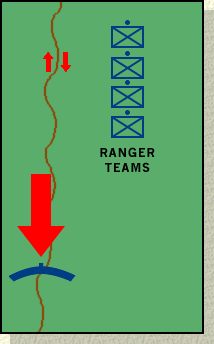 |
|
| Ambushing the
enemy At a predetermined time, or when they receive orders, the ranger teams attack. The primary targets are the enemy’s supply convoys and engineer vehicles. To destroy these targets, ranger teams set up ambushes along the road. Typical weapons used in these ambushes are mines, sniper rifles, grenade launchers and machine guns. An ordinary ranger team can also receive support from ranger teams specialized in heavy weapons, such as anti-tank missiles or mortars. In addition to ambushing the enemy, strategic parts of the road such as bridges and culverts are demolished with explosives. The road is also additionally blocked with land mines and anti-tank mines. Enemy engineers that attempt to clear mines or repair the road are ambushed with sniper rifles or mortars. |
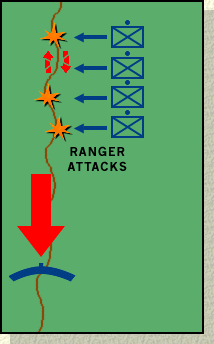 |
|
| The results These guerilla warefare tactics destroy large amounts of enemy supplies and leave the road practically useless. The result is that few supplies (or none at all) reach the enemy’s fighting forces at the front line. Without continual supplies the enemy’s advance will come to a halt, due to a lack of food, fuel and ammunition. Lack of food will lower the enemy’s moral and ability to fight, lack of fuel will limit enemy movement and invoke a defensive posture, and lack of ammunition will hamper enemy combat efficiency further. The overall result is that the enemy’s main forces are left without the resources or the willpower to win the battle - they become an easy prey for other Swedish forces, such as mechanized brigades, attack aircraft and anti-tank helicopters. |
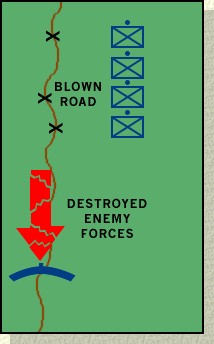 |
Find out more about the following (coming soon):